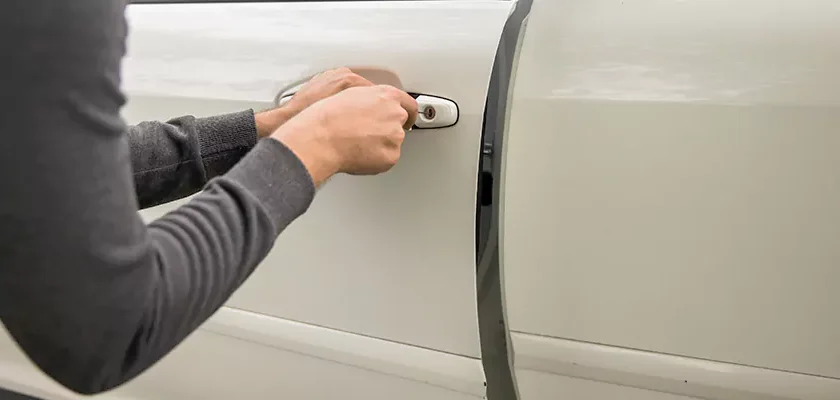A properly functioning sewer line is one of those things that most homeowners take for granted – until there’s a problem. We expect wastewater to flow out of sight and out of mind once it disappears down the drain. But when sewer lines fail, the results can be messy, unhealthy, and expensive to fix. This is why regular sewer line inspections and maintenance are so important for any homeowner.
Why Inspect Sewer Lines?
There are two main reasons why sewer line inspections should be a regular part of home maintenance:
1. Detect Problems Before They Become Emergencies
Like most infrastructure, sewer lines will degrade over time. Small cracks, invading tree roots, misaligned joints, and accumulating grease/debris can all cause major blockages. But these issues often go unnoticed until a full-blown clog or backup occurs. At that point, you’re facing an emergency repair that will cost exponentially more than if the problem had been detected early.
Sewer line inspections allow you to spot minor leaks, cracks, and blockages before they turn into basement flooding or sewage backups. Early detection gives you time to make repairs on your schedule rather than reacting to an emergency at 2 AM.
2. Avoid Expensive Damage to Your Home and Property
If a major sewer line failure does occur, the results can be catastrophic. Raw sewage can back up into your home, causing thousands of dollars in damage. Failing lines under the yard can create massive sinkholes that are dangerous and costly to repair. And if sewage leaks out into the environment, you may be faced with hazardous contamination, fines, and cleanup costs.
Catching sewer line problems early not only saves you money on the repairs – it also helps you avoid these damaging and dangerous consequences down the road.
How Often Should Sewer Lines Be Inspected?
Most experts recommend having your sewer line inspected every 3-5 years. Some signs that it may be time for an inspection include:
- Slow drains or gurgling sounds from pipes
- Strong sewage smells around your home or yard
- Visible surfacing of wastewater in the yard
- Cracks in the yard or foundation shifting
- History of plumbing/sewer issues on the property
For older homes, annual or bi-annual inspections are a good idea since age deteriorates lines over time. It’s also smart to get sewer lines checked after major storms, earthquakes, or other events that may have damaged your home’s plumbing. If you’re selling your home, a sewer scope can identify any issues upfront so buyers know what they’re getting into.
What Does a Sewer Line Inspection Entail?
Two main techniques are used to inspect the interior condition of underground sewer pipes:
Camera Inspections
This is the most common and effective way to inspect sewer line integrity. A specialized camera scope is snaked down the main line and laterals, providing a live video feed. The plumber or technician can observe any cracks, leaks, blockages, or root intrusion. Camera scopes also help identify the type of pipe material and exact locations of issues. Video footage provides visual evidence of the inner condition of your pipes.
Dye Testing
With this method, specialized non-toxic dyes are flushed down toilets or drained in sinks throughout the home. The technician then examines the main and lateral lines to see where dye appears. Any dye surfacing on the ground indicates a leak. Dye testing alone doesn’t provide clear images of the pipes’ interior but can help confirm if and where leaks exist. This pairs well with camera inspections.
Professional sewer scopes also make sure all lines are aligned and flowing properly without any major blockages or obstructions. Between visual camera images and dye testing, a thorough sewer inspection provides a detailed analysis of your underground sewer system.
Key Sewer Line Problems to Watch Out For
Certified sewer inspectors know what potential issues to look for. Here are some of the most common sewer line defects:
Tree Root Invasion
Root systems from shrubs and trees in your yard will naturally grow seeking water sources – like leaking sewer lines. Once roots take hold inside the pipes, they are difficult to remove and can cause major clogs, fractures, and backups. Catching root intrusion early is key.
Broken/Collapsed Pipes
Older pipes made from clay or concrete are vulnerable to cracks and collapse over time. Excessive roots, shifting earth, and corrosive wastewater all accelerate deterioration. Even small cracks allow soil, roots, and debris to enter the line, causing further damage.
Failing Connections
The joints where lateral, main, and branch lines connect can loosen or shift over time, causing leaks and blockages. Failures are more common with older grouted connections. Proper alignment and sealing is critical.
Clogs/Blockages
Even small accumulations of grease, wipes, scum, and other debris can obstruct wastewater flow, eventually causing backups. Clogs are easier to clear before they worsen and cause line failure or overflow.
Foundation/Ground Shifting
Nearby excavations, earthquakes, floods, and drought can all cause soil movement that misaligns pipes and puts added stress on connections. Inspections determine if shifting has affected your sewer system’s integrity.
Catching any of these common defects early provides time for repair before they escalate into bigger problems.
DIY vs Professional Inspection
Some homeowners may be tempted to inspect and clear their own sewer lines using store-bought drain snakes, plungers, or DIY camera scopes. While this may work for simple sink clogs, sewer lines have risks that make professional inspection advisable:
- Specialized equipment: Plumbers and sewer technicians have commercial-grade scoping equipment, protective gear, and drain machines not available to homeowners. This gets better results.
- Experience: They know exactly what to look for and can diagnose issues accurately. DIY attempts often miss serious underlying problems or damage the pipes.
- Thoroughness: Professionals inspect the entire system of main lines, laterals, joints, and connections on your property. DIYers usually only see a limited section of pipe.
- Safety: Sewage gasses, dangerous blockages (like hardened grease or collapsed pipes), and noxious chemicals can put you at risk if handled improperly. Let the experts deal with the nastiness.
- Documented results: Professional sewer scopes provide video documentation and clear reports identifying any needed repairs.
Attempting sewer line inspections without proper training, equipment, and experience could cost you more in the long run if problems get missed or cause further damage. Getting a professional assessment using state-of-the-art video technology is worth the peace of mind.
Prioritizing Sewer Line Maintenance
It’s understandable that subtle plumbing issues are out of sight and out of mind for busy homeowners. But neglecting your underground sewer pipes risks causing much bigger headaches down the road. Adding sewer line assessments to your regular home maintenance schedule now can avoid major damage, repairs, and headaches later on. Here are some tips for making sewer upkeep a priority:
- Know your system. Find out the age of your sewer pipes, their depth, materials used, and where the main line and laterals run. Commercial plumbers can usually provide this info if unknown.
- Map inspection dates. Mark your calendar to get scoping done every 3-5 years. Schedule more frequent inspections if you live in an older home.
- Watch for warning signs. Don’t ignore slow drains, sewage smells, or standing water which may indicate sewer trouble.
- Fix identified problems. Use inspection findings to make necessary repairs before small issues become huge expenses.
- Install cleanouts. Ensure plumbers can easily access your main sewer lines for inspections and clearing.
- Discuss plans if selling. Tell buyers if sewer lines will need replacement or repairs down the road.
With America’s aging infrastructure, sewer issues are common even in modern homes. But a little proactive monitoring and maintenance goes a long way toward avoiding unpleasant and costly failures. Protect your home investment and peace of mind by making sewer inspections a priority.
What To Do If You Suspect A Problem
Notice sewage odors, standing water, or flooded basements lately? Don’t ignore these telltale warning signs that something may be wrong with your sewer line. Here are the steps to take:
1. Call a Professional for Inspection
Don’t try to diagnose or handle sewer issues yourself. Contact a licensed plumber or sewer technician to scope your lines and assess the problem. Trying DIY repairs often makes issues worse.
2. Document the Issue
Have the technician provide documentation of identified problems through video footage, photos, or a written summary. This creates a record of defects and can help if repairs are disputed later.
3. Get a Second Opinion for Major Issues
For significant problems like completely blocked lines, get a second inspection company to confirm before proceeding with repairs. Beware companies that pressure you into overly expensive solutions before you’ve had time to assess the issue.
4. Determine Your Repair Options
Ask your technician to outline possible fixes for the issue, costs, and their recommended approach. Compare their advice to other professional opinions before deciding how to proceed.
5. Hire Qualified Repair Experts
Once you’ve decided on a repair method, hire qualified sewer contractors to make repairs properly. Trying DIY sewer repairs usually backfires and voids warranties on work.
6. Follow Up After Repairs
Request the repair company scope the line again once work is complete to ensure the fix was successful and no underlying issues remain.
By following these steps when a sewer problem is suspected, you can ensure the issue is properly diagnosed and fixed without causing further home damage or health hazards. Don’t wait until you have raw sewage flooding your basement to take action!





